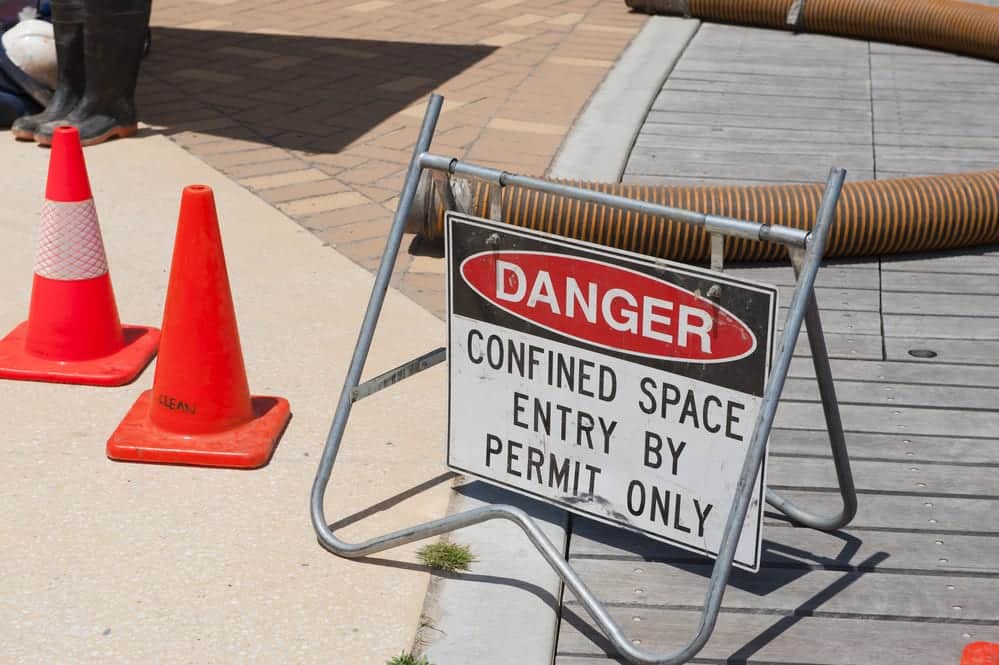Historical redevelopment projects, tank cleaning initiatives, and silo operations all have one thing in common that you might not expect: They all contain areas that are considered “confined spaces.” These spaces might be large enough for workers to enter, but they do contain a unique set of hazards. Scroll down to learn more about confined space entry and how we can help.
Permit-Required Confined Space Entry
OSHA Guidelines for Confined Space Entry
First, let’s define a confined space. By Occupational Safety and Health Administration (OSHA) standards, a confined space has several distinct characteristics:
- Large enough for an employee to enter fully and perform assigned work
- Not designed for continuous occupancy by the employee
- Has a limited or restricted means of entry or exit.
So, what are some examples of confined spaces? According to OSHA, confined spaces may include underground vaults, storage tanks, vessels, silos, and other similar areas. Depending on the unique complications of a confined space, OSHA may define it as a permit-required confined space. Permit-required confined spaces have stricter guidelines and must have one or more of the following characteristics:
- Contains or has the potential to contain a hazardous atmosphere
- Has an internal configuration that might cause an entrant to be trapped or asphyxiated
- Contains a material with the potential to engulf someone who enters the space
Confined Space Entry Challenges
As mentioned above, confined spaces are far more common than one might realize. Identifying and classifying them is the first step in preventing fatalities or injuries. From there, the confined space’s unique challenges must be assessed. First, deaths in confined spaces often occur because of general oxygen deficiency, but deaths can also occur due to a confined space’s toxic or combustible nature. The latter is due to serious atmospheric hazards, which must be tested and monitored rigorously prior to human entry.
Confined Space Entry Training
Once a confined space is identified and classified, an employer must thoroughly train all workers in safe, OSHA-sanctioned confined space entry. After the training, employers must then assess employees to ensure thorough understanding of a confined space’s unique challenges. This typically includes a unique written program to educate and assess workers. These training courses must include the following OSHA-mandated aspects:
- Preventing unauthorized entry
- Identifying and evaluating unique permit-required space hazards
- Testing atmospheric conditions in the confined space
- Monitoring the confined space during entry
- Testing for the following atmospheric hazards in this sequence designated by OSHA: oxygen, combustible gases or vapors, and toxic gases or vapors
- Implementing the means, procedures, and practices to eliminate or control unique confined space hazards
- Identifying and routinely assess employee duties
When it comes to confined space entry training, there is no room for trial and error. If you are not sure where to begin, Environmental Works can help. We offer confined space entry training that helps establish the means, procedures, and best practices to control confined space hazards. Our training courses include all OSHA-mandated topics:
- Specifying acceptable entry conditions
- Isolating the permit space
- Providing barriers
- Verifying acceptable entry conditions
- Assessing ongoing worker duties
_____
Confined space entry certainly presents a unique set of challenges. Fortunately, with proper training and due diligence, you can keep your workers educated and safe during even the most hazardous confined space projects.
Are you concerned about keeping your workers safe during confined space entry or permit-required confined space entry? Give Environmental Works a call. We have in-house training experts ready to help. We will walk you through the specifics of confined space entry, including OSHA-mandated training courses for you and your team. When you’re ready, you can contact EWI online or call 417-890-9500 for more information.




